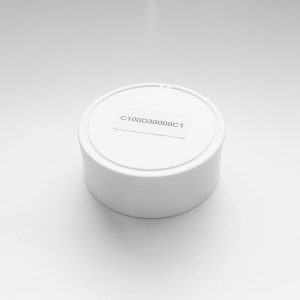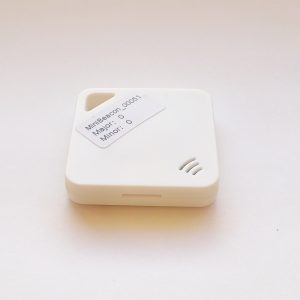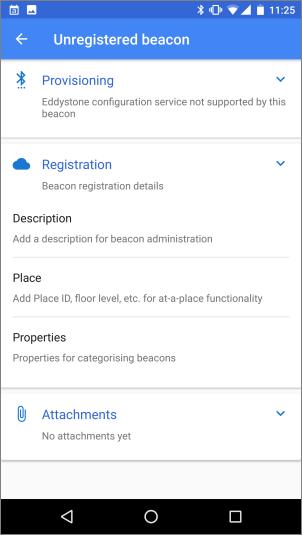Google have quietly cut much of the usefulness of using Nearby with Beacons. The Google Beacon Tools app previously allowed you to register beacons that advertise an id (not URL), even iBeacon, associating the beacon with either a URL or an app so that Android users receive a notification when they come across a beacon.
The Android Google Beacon Tools app that is used to register Nearby beacons has had some updates. Google have removed the capability to register iBeacons and the app now goes into a provisioning state to connect to the beacon being provisioned:
The Android Beacon Tools app can now only connect to and provision Eddystone GATT service Eddystone-UID and Eddystone-EID beacons otherwise it then shows “Eddystone configuration service not supported by this beacon”:
The majority of beacons, not just ours, don’t support Eddystone GATT service. This severely cuts down the types of beacon that can now be registered with the Beacon Tools app (in our case only 7 beacons).
The Nearby programming API, that you can use to register Nearby beacons in your app, still declares it supports iBeacon so it’s still currently possible to register non Eddystone GATT service beacons but not so easily.
This is going to be a problem for organisations who have used Nearby as an alternative to Eddystone-URL. If they have been relying on the Beacon Tools app rather than using their API via their own app, they won’t be able to register more beacons. This puts them into the difficult position of needing to either purchase Eddystone-GATT Service beacons or write an app that uses the API. However, there must have been some reason to restrict Beacon Tools to only Eddystone Standard GATT beacons and this might, one day, also apply to the API.
To be clear, this doesn’t affect Eddystone-URL. Eddystone-URL never, and still doesn’t need, registration at Google.
Together with the recent removal of Eddystone-URL detection from Chrome for iOS, this sees Google distancing Eddystone from iOS and iBeacon from Android OS. Organisations can still write apps that scan for iBeacon or Android and Eddystone on iOS. However, for some unknown reason Google no longer wants to support this in their own apps and tools.



